Brazil wilderness holds many folds more Dyckia species than wonder Botanic.
Just the two Southernmost Brazilian States, Santa Catarina and Rio Gande do Sul
may be the home of some folds more Dyckia species than the amount Botanic knows up to now.
We have uncountable mountains to climb and most never climbed by any Dyckia enthusiast.
We have deep rocky valleys where people go in and never get out ( at least alive).We have huge rocky canyons which parallel is The Grand Canyon in USA.
This part of the country presents some very cold winters and temperatures down to -18 degrees centigrades were already registered (Campo dos Padres - Urubici - SC).
This Summer has being the hottest since known times and we experimented 48 degrees Centigrades afternoons.
We have a huge coastal area with the most beautiful sandy beaches this side of the Atlantic Ocean and also huge rocky coastal cliffs.
Santa Catarina and Rio Grande do Sul alone already presented the world with some of the more stunning Dyckia species, Dyckia brevifolia, delicata,gloriosa, splendens, hebdingii, domfelicianensis,speciosa and many, many others.
Meanwhile Dyckias are hard to find as they usually habit places of very difficul acesses.
We do not stumble on Dyckias every minute here.
99,9999999999...percent of our populations doesn´t even know what a Dyckia might be.
Dyckias are rare everywhere they may exist as they are always unique in any place they come to be.
Their populations are ever composed by few individuals and are found in a single small spot in most of the times. Rare are thsoe species that can be found by the thousands( Dyckia encolirioides in some spots of Santa Catarina and São Paulo Coast line may be found by the plenty.).
In order to acess some of the most remote places where Dyckia live the Dyckia lover must be in the most pristine health conditions.
Decidely not a task for the sexagenary, high blood pressured swollen bellied ones...
You must be fit as a Miura Bull( En las tardes de toro de Madrid.)
Dyckia colorata would well be a nice name here, wouldn´t?
Just the two Southernmost Brazilian States, Santa Catarina and Rio Gande do Sul
may be the home of some folds more Dyckia species than the amount Botanic knows up to now.
We have uncountable mountains to climb and most never climbed by any Dyckia enthusiast.
We have deep rocky valleys where people go in and never get out ( at least alive).We have huge rocky canyons which parallel is The Grand Canyon in USA.
This part of the country presents some very cold winters and temperatures down to -18 degrees centigrades were already registered (Campo dos Padres - Urubici - SC).
This Summer has being the hottest since known times and we experimented 48 degrees Centigrades afternoons.
We have a huge coastal area with the most beautiful sandy beaches this side of the Atlantic Ocean and also huge rocky coastal cliffs.
Santa Catarina and Rio Grande do Sul alone already presented the world with some of the more stunning Dyckia species, Dyckia brevifolia, delicata,gloriosa, splendens, hebdingii, domfelicianensis,speciosa and many, many others.
Meanwhile Dyckias are hard to find as they usually habit places of very difficul acesses.
We do not stumble on Dyckias every minute here.
99,9999999999...percent of our populations doesn´t even know what a Dyckia might be.
Dyckias are rare everywhere they may exist as they are always unique in any place they come to be.
Their populations are ever composed by few individuals and are found in a single small spot in most of the times. Rare are thsoe species that can be found by the thousands( Dyckia encolirioides in some spots of Santa Catarina and São Paulo Coast line may be found by the plenty.).
In order to acess some of the most remote places where Dyckia live the Dyckia lover must be in the most pristine health conditions.
Decidely not a task for the sexagenary, high blood pressured swollen bellied ones...
You must be fit as a Miura Bull( En las tardes de toro de Madrid.)
Dyckia colorata would well be a nice name here, wouldn´t?


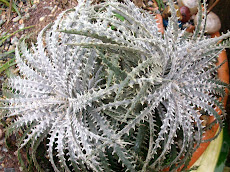



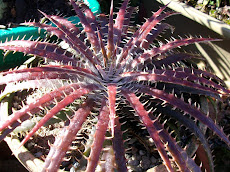
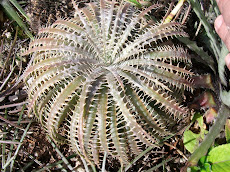
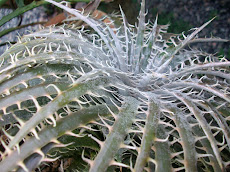

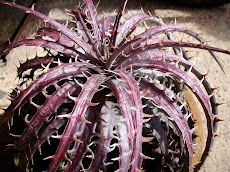

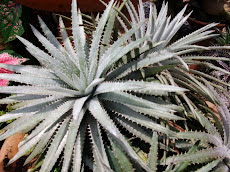

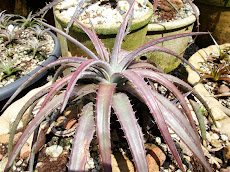
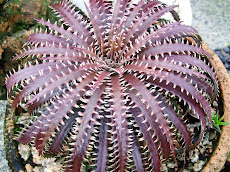

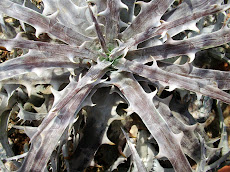
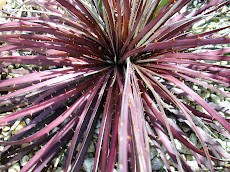
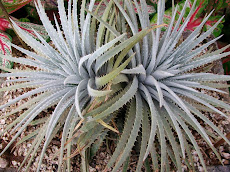
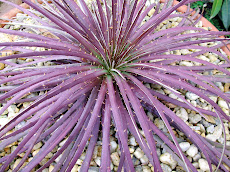
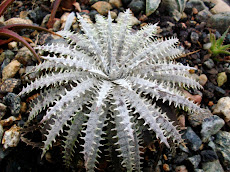
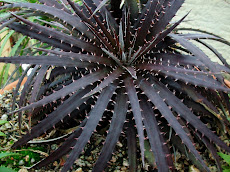
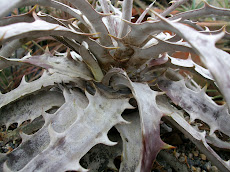

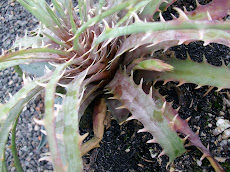

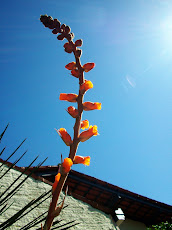
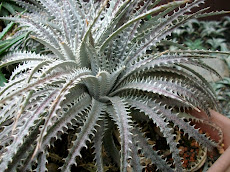

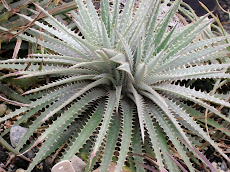
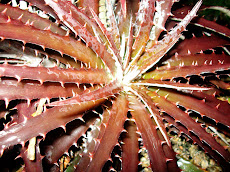
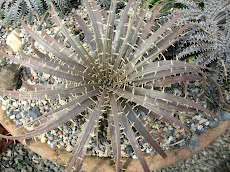

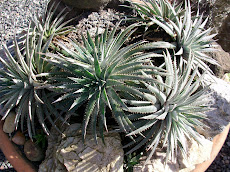
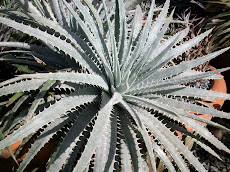

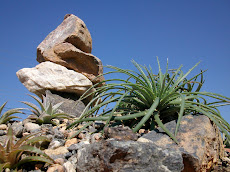
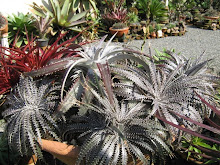
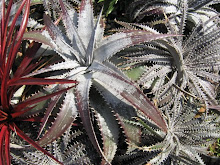
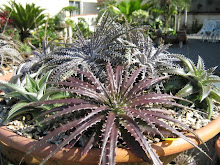
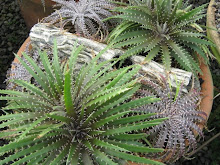
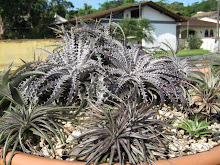
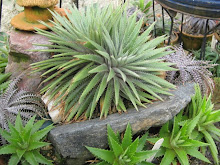

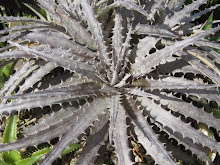
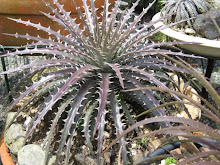
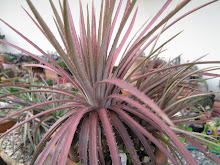

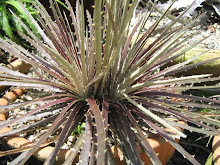
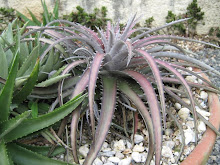
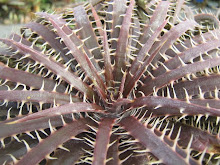



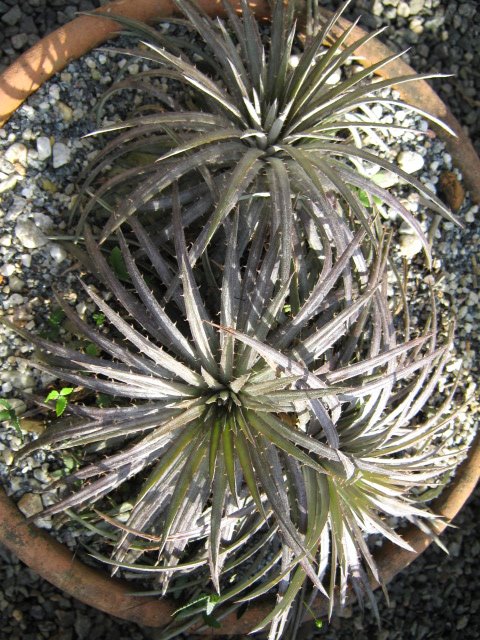
Is this a juvenile plant? The leaves look less curved than the typical D. delicata.
ReplyDeleteI meant less dense, not curved.
ReplyDelete